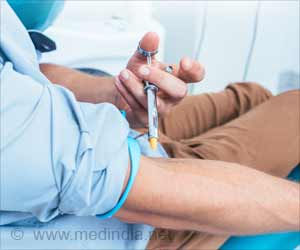
‘The transition from prison back into the community has a high burden of addiction and overdose risk.’
Tweet it Now
Drug overdose, particularly opioid overdose, is a leading cause of death among people who have recently been in prison, not just in the U.S. but around the world.Analyzing Fatal and Nonfatal Opioid Overdose Risk Following Release From Prison
The new study is one of the few that considers not just fatal overdoses but also non-fatal ones, which often are accompanied by burns, seizures, neuropathy, infections, and fall-related injuries. Findings, which showed women were more at risk of opioid overdose than men, were published in the Journal of Substance Use and Addiction Treatment.Researchers analyzed a dataset that combined Oregon death statistics from 2014 to 2018 with corrections, Medicaid, and hospital admission and discharge information.
They used Medicaid claims data as our main way of detecting overdose events identified in the emergency department or through hospitalization. Nearly 90% of people released from the Oregon Department of Corrections are enrolled in Medicaid.
The integrated data enabled the scientists to estimate the number of opioid overdoses among people recently released from prison, and they found the frequency of overdose was “exceedingly high” –1,086 overdoses per 100,000 “person-years,” a statistical metric for describing the rate of incidence within a population.
Advertisement
Many people with substance use disorders end up in the criminal justice system, and prisons and jails have historically not been equipped to manage the healthcare needs of high-risk individuals. Nearly two-thirds of all adults in custody in the United States have a documented substance use disorder.
Advertisement
The adults released during that span experienced a total of 579 opioid overdoses, including 65 that were fatal. The overdose risk was highest in the first two weeks – 2,286.7 per 100,000 person-years. The risk was highest among women and those with mental health or substance use disorder treatment needs.
Women who had been incarcerated suffered an opioid overdose at a rate of 1,582.9 per 100,000 person-years, and the rates for those with mental illness and substance use disorder were 1,624.3 and 1,382.6, respectively. Among women released from prison, the higher rate is related to a greater mental health burden.
Ways to Reduce Opioid Overdose After Release from Prison
There is a wide consensus that medications for opioid use disorder are highly effective at reducing the risk of overdose and other addiction-related negative health outcomes. However, providing those medications for individuals in prison is still uncommon nationally.The heightened risk of opioid overdose among people recently released from prison highlights the need to develop, implement and expand strategies and interventions to protect those individuals when they are at their most vulnerable.
Prisons and jails need to do more to ensure incarcerated individuals have access to lifesaving medications for opioid use disorder, and other harm-reduction interventions during and after their release into their community.
Source-IANS













